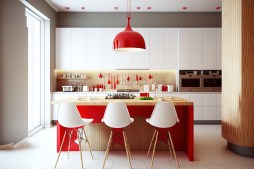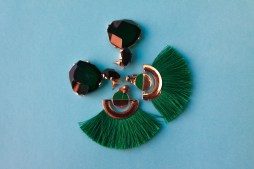Less is More: Understanding the Impact of Minimalist Decorating Styles
In recent years, the trend of minimalism has gained significant traction in the world of interior design. It emphasizes simplicity and functionality, encouraging individuals to declutter their spaces and focus on what truly matters. This article explores how adopting a minimalist decorating style can create impactful living spaces that are not only aesthetically pleasing but also promote mental clarity and well-being.
What is Minimalism?
Minimalism is more than just a design style; it’s a lifestyle choice that prioritizes simplicity and intentionality. In decorating, it involves reducing visual clutter by limiting color palettes, furniture pieces, and decorative items. The core principle revolves around keeping only what you need or what brings you joy—often summarized by the phrase ‘less is more.’ This approach allows for a space that feels open and serene while also highlighting the beauty of individual elements.

Benefits of Minimalist Decorating
Adopting a minimalist decorating style offers several benefits. First, it can lead to reduced stress levels as clutter-free spaces promote calmness and focus. A minimalist environment encourages better organization and efficiency as every item has its place. Additionally, this style often leads to cost savings since it encourages buying fewer but higher-quality pieces instead of filling your home with many inexpensive items.
How to Create a Minimalist Space
Creating a minimalist space starts with an honest assessment of your belongings—what do you truly need? Begin by decluttering each room one at a time. Keep only essential items or those that bring genuine joy or utility. Incorporate neutral color schemes with occasional bold accents to maintain visual interest without overwhelming the senses. Choose furniture wisely; opt for multi-functional pieces that serve more than one purpose.
Key Elements of Minimalist Design
Several key elements define minimalist design: clean lines, open spaces, natural light, and simple color palettes are paramount in achieving this look. Incorporate natural materials such as wood or stone for texture without excessive detail. Utilize plants strategically; they provide life to your space while adhering to minimalistic principles when chosen thoughtfully.
Maintaining Your Minimalist Aesthetic
Once you’ve established your minimalist space, maintaining its aesthetic requires ongoing effort. Regularly evaluate your possessions and be willing to let go of items that no longer serve you or contribute positively to your environment. Embrace seasonal changes by swapping out decor elements subtly while avoiding clutter accumulation.
In conclusion, embracing minimalism in decorating isn’t just about aesthetics; it’s about creating an environment conducive to focus and relaxation amidst our busy lives. By implementing these principles into your home décor strategy, you can achieve spaces that feel expansive yet intimate—truly realizing the idea that less is indeed more.
This text was generated using a large language model, and select text has been reviewed and moderated for purposes such as readability.











